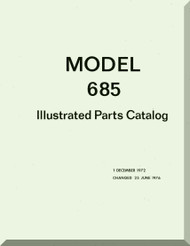The Canadair CT-114 Tutor (company model CL-41) was the Royal Canadian Air Force (RCAF), and later Canadian Forces, standard jet trainer, between the early 1960s and 2000. Designed and built by Canadair, it was ordered in September 1961. The Tutor served as the Canadian Forces primary jet trainer until it was replaced by the CT-155 Hawk and CT-156 Harvard II in 2000. The CL-41G model supplied to Malaysia was built as a ground-attack aircraft. The Tutor is currently still used by the Snowbirds aerobatics team.
Foreign Exchange Rates & World Currencies - Bloomberg Current exchange rates of major. 2180, Aero Commander 114, 114A, B, TC Series 1997 Illustrated Parts Catalog (part# IPC-114-A). 2181, Aero Commander 114-A 1976 Maintenance Manual (part# M114001-2). 2183, Aero Commander 114A 1979 Pilot's Checklist (part# AC114A-79-CL-C). Digital Blue Usb Microscope Drivers. 2184, Aero Commander 114A 1979 Pilot's Operating Handbook. Bell Aircraft Corporation Model P-39 to P-63 Aircraft Blueprints Engineering Drawings - on DVDs Lockheed F / RF / TF-104 G C Aircraft Operating Data Manual, 250 pages.
The CL-41 design was the product of the Canadair Preliminary Design department. The design incorporated a turbojet-powered, low-wing aircraft with a tricycle undercarriage and a T-type tail assembly. The flying controls are manual with spring tabs. The cabin, fitted with a rear-hinged canopy for both crew members, can be pressurized to a differential of 3 psi (20 kPa), the equivalent of about 2,000 m of altitude. It was designed to be a side-by-side trainer for providing elementary jet flight training and other training to an advanced level.

The prototype first flew on 13 January 1960. One critical area of design was the positioning of the vertical stabilizer (fin). The CL-41 was intended to demonstrate spin recovery. If the fin is too far forward, a spin cannot be initiated, but if it is too far aft, recovery becomes impossible. Model tests were done to find the optimum position. The original Tutor wind-tunnel model had a cruciform tail, which was revised to the T-tail design by removing the portion above the horizontal stabilizer.

In September 1961 the Canadian government ordered 190 examples of the production variant, CL-41A for the RCAF as the CT-114 Tutor. The Tutor served for over thirty years as a primary trainer.
Atomix Virtual DJ V6.0.6 Portable Edition Crack. In 1976, the Canadian Forces modified 113 remaining aircraft with upgraded avionics and provisions for two belly-mounted 41 US gal (155 l) external fuel tanks. Canadair also developed an armament training and light attack variant, the CL-41G, with an uprated engine and underwing hard points to allow the carriage of external stores (up to 4,000 lb (1814 kg) of weapons) and drop tanks. In March 1966, the Royal Malaysian Air Force ordered twenty (serials M-22-01 to M22-11) examples of the CL-41G-5 Tebuan (which means Wasp in the Malay language) aircraft as counterinsurgency (COIN) aircraft. The Tebuan entered service in Malaysia in 1967, serving for over twenty years, before being phased out in June 1986 and replaced by the Aermacchi MB-339A. One other variant was developed, the CL-41R which was fitted with an F-104 Starfighter nose as a proposed electronic systems trainer for future RCAF CF-104 pilots.
The R model never went into production. Aerobatics In 1967, ten Tutors were modified for use as a formation aerobatic aircraft by the RCAF (and later the unified Canadian Forces) display team, the Golden Centennaires to celebrate Canada's centennial year. The display team was disbanded after the 1967 season.
In 1971 a formation team was formed at 2CFFTS (Two Canadian Forces Flying Training School) at CFB Moose Jaw. In 1972 the name 'Snowbirds,' was chosen and in 1978 the team gained squadron status as 431 Air Demonstration Squadron, who continue to perform at air shows and special events including the annual flypast on Canada Day over the capital city, Ottawa. Modifications for the Snowbirds include: a smoke generating system, a unique paint scheme for added crowd appeal, and a highly tuned engine to enhance engine response in low level flying. Role Trainer, Ground-attack aircraft Manufacturer Canadair First flight 13 January 1960 Retired 2000 as a trainer (Canadian Forces) Status Small numbers currently in flying condition for testing and aerobatic demonstration Primary users Canadian Forces Royal Canadian Air Force Royal Malaysian Air Force Produced 1963–1966 Number built 212 General characteristics • Crew: two • Length: 32 ft 0 in (9.75 m) • Wingspan: 36 ft 4 in (11.07 m) • Height: 9 ft 4.5 in (2.86 m) • Wing area: 220 sq ft (20.44 sq m) • Empty weight: 4,840 lb (2,195 kg) • Loaded weight: 7,348 lb (3,333 kg) • Max. Takeoff weight: 11,000 lb (5,000 kg) • Powerplant: 1 × Orenda J85-CAN-40 turbojet, 2,650 lbf (11.8 kN) Performance • Maximum speed: 486 mph (782 km/h) • Range: 944 miles (1,520 km) • Service ceiling: 44,500 ft (13,560 m) • Rate of climb: 4,220 ft/min (21.4 m/s) Armament • CL114 carry external fuel tanks.